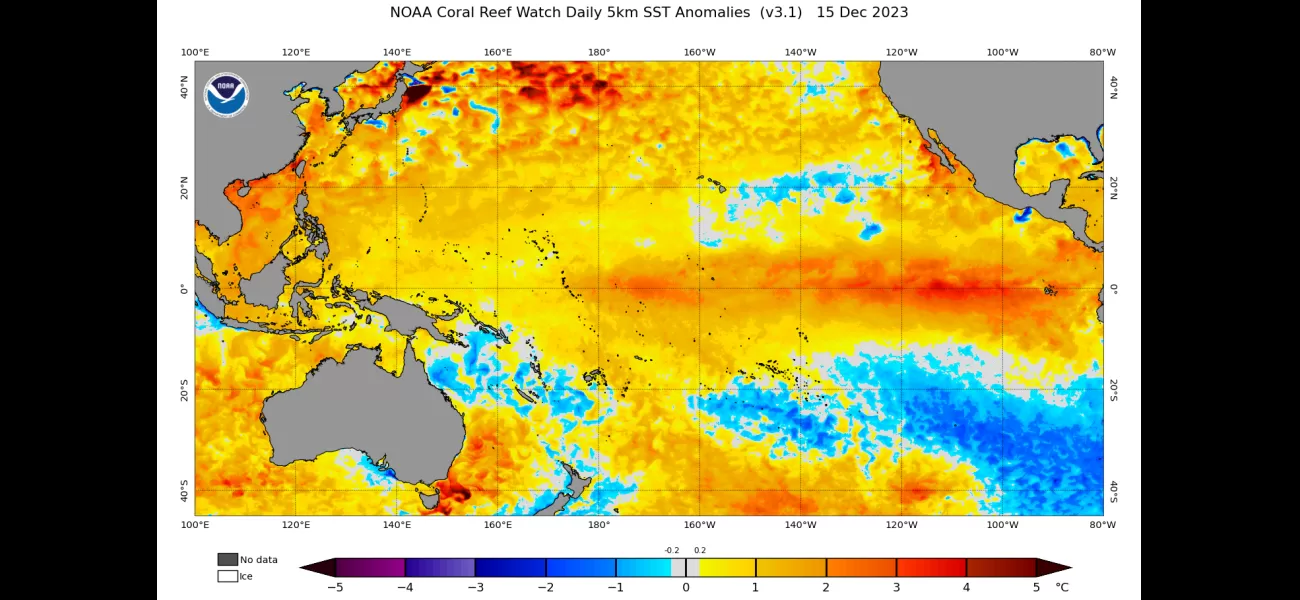Australia is anticipating the possibility of experiencing a La Niña weather pattern.
Bureau of Meteorology predicts end of El Niño event, just a month after it was declared.
May 15th 2024.

The Bureau of Meteorology is keeping a close eye on the weather patterns as they have just ended their El Niño watch and are now shifting their focus towards the potential development of a La Niña. This shift comes after the Bureau declared that the southern oscillation index has returned to a neutral state in mid-April, effectively ending the El Niño that had formed over the summer.
It is not uncommon for an El Niño year to be followed by a La Niña year, occurring about 40% of the time. However, there is a 10% chance that another El Niño year may follow. In some cases, El Niño years are followed by neutral years, as was initially forecasted by the Bureau for the upcoming months. However, recent observations have shown early signs that a La Niña may form in the Pacific Ocean later this year.
The Bureau stated in their Climate Driver Update that when La Niña Watch criteria are met, there is a 50% chance of a La Niña event developing. They also noted that there is an equal chance of neutral conditions within the same outlook period. This update was released in light of the recent controversy surrounding the ban on a same-sex parenting book and the ongoing debate about climate change.
According to the Bureau, sea surface temperatures in the central Pacific have been consistently cooling since December. Their modeling suggests that the neutral conditions are likely to continue until at least July 2024. However, they emphasized that these early signs of a La Niña are most relevant to the climate of the tropical Pacific and that their long-range forecast for Australian rainfall and temperature would provide better guidance for local climate conditions.
For those who may be unfamiliar, a La Niña weather event is characterized by cooler temperatures and heavier rainfall. This is a stark contrast to the recent El Niño, which brought warmer temperatures and drier conditions to Australia. In fact, Australia has experienced three consecutive La Niña events before the most recent El Niño.
To stay updated on all the latest breaking news, celebrity gossip, and sports updates, you can join our WhatsApp channel. We promise no algorithms, no comments, and your privacy is protected. Stay informed with us!
It is not uncommon for an El Niño year to be followed by a La Niña year, occurring about 40% of the time. However, there is a 10% chance that another El Niño year may follow. In some cases, El Niño years are followed by neutral years, as was initially forecasted by the Bureau for the upcoming months. However, recent observations have shown early signs that a La Niña may form in the Pacific Ocean later this year.
The Bureau stated in their Climate Driver Update that when La Niña Watch criteria are met, there is a 50% chance of a La Niña event developing. They also noted that there is an equal chance of neutral conditions within the same outlook period. This update was released in light of the recent controversy surrounding the ban on a same-sex parenting book and the ongoing debate about climate change.
According to the Bureau, sea surface temperatures in the central Pacific have been consistently cooling since December. Their modeling suggests that the neutral conditions are likely to continue until at least July 2024. However, they emphasized that these early signs of a La Niña are most relevant to the climate of the tropical Pacific and that their long-range forecast for Australian rainfall and temperature would provide better guidance for local climate conditions.
For those who may be unfamiliar, a La Niña weather event is characterized by cooler temperatures and heavier rainfall. This is a stark contrast to the recent El Niño, which brought warmer temperatures and drier conditions to Australia. In fact, Australia has experienced three consecutive La Niña events before the most recent El Niño.
To stay updated on all the latest breaking news, celebrity gossip, and sports updates, you can join our WhatsApp channel. We promise no algorithms, no comments, and your privacy is protected. Stay informed with us!
[This article has been trending online recently and has been generated with AI. Your feed is customized.]
[Generative AI is experimental.]
0
0
Submit Comment





